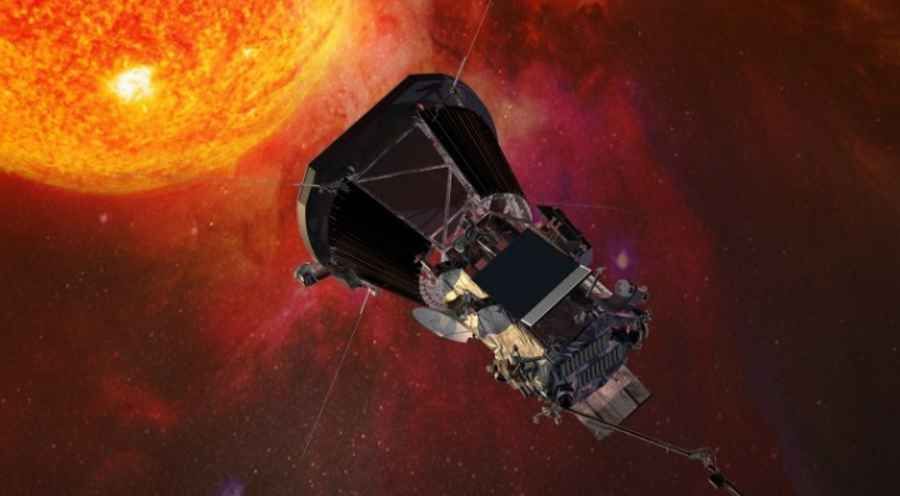Parker Solar Probe begins second orbit around the Sun
Parker Solar Probe has begun the second of 24 planned orbits around the Sun. All the probe’s systems and instruments are working perfectly, and the data collected during the first orbit around our star are still being downloaded.
Just 161 days after leaving Cape Canaveral, Florida, the Parker Solar Probe has completed its first orbit wokoThe spacecraft will be able to see the Sun, reaching the point in its orbit farthest from our star – called aphelium – January 19, 2019. The spacecraft has begun its second orbit and will reach perihelion, the point in its orbit closest to the Sun, on April 4 this year.
Parker Solar Probe entered full operational mode, referred to as Phase E, on January 1. This means that all systems are on and working as planned. The probe continues to transmit to Earth via the Deep Space Network the data collected during the first orbit. More than 17 gigabytes have been downloaded so faroin the information. The entire data package from the first orbit will be downloaded by the end of April.
– It was a fascinating orbit. We learned a lot about how the space probe works and how it reacts to the solar environment. I am proud to say that the team’s predictions turned out to be very accurate,” said Parker Solar Probe project manager Andy Driesman of the Johns Hopkins University Applied Physics Laboratory. This is the squareowka designed, built and now manages the probe and the entire mission.
– always mowe wore that we didn’t know what to expect, dopoki we will not look at the data – Nour Raouafi admitted, the roAlso from the Johns Hopkins University Applied Physics Laboratory. – The data obtained indicate many new things about whichothat we had no idea about until now. They indicate roalso on a number of potential new discoveries. Parker Solar Probe delivers on its promise to reveal the secrets of our Sun – added the researcher.
Currently, the teamohe mission’s management is focused not only on analyzing scientific data, but also on preparing for the second approach to our star, whichore will take place in about two months.
In preparation for this event, the probe’s memory is being scrubbed of fileoin collected during the first orbit, whichore have already been delivered to Earth. In addition, the spacecraft is receiving updated navigation information and a new command sequence, whichora contains instructions for the next month’s work.
As with the first perihelion of the mission, ktore took place in November 2018, the second will bring the probe to a distance of about 24 millionoin kilometeroin from the Sun. Four sets of instrumentow aboard the probe will help scientists seek answers to questions about the fundamental physics of the Sun.

The green color indicates the probe’s current position and first orbit. The red color is the subsequent orbits. Photo. NASA
During its first orbit, Parker Solar Probe set two records. It approached the star at a record distance of just 24 millionoin kilometerow. The previous record was set by the Helios 2 probe in 1976 and was about 43 million kilometersow. The second of the recordow is a speed record. The probe reached a speed of more than 340,000 kilometersow per hour relative to the Sun. This is the fastest spacecraft built by human hand to date. The previous record belonged roAlso to the German-American Helios 2 probe, whichora in 1976 reached 246,000 kilometersow per hour. But during its mission, Parker Solar Probe will still break records many times over.
The probe was launched into space last August 11 from Cape Canaveral aboard a ULA Delta IV Heavy rocket. Its task is to study the outer layers of the Sun’s atmosphere. Scientists hope to gain a better understanding of the physical phenomena occurring in wokoł. They also want to clarify the heating mechanisms of the solar corona, whichora has a temperature of more than twooch millionoin st. Celsius, while the surface of the star is less than six thousand st. Celsius.
Researchers want to roalso get to know the detailedoły regarding the solar wind – A plasma jet consisting of a protonow, electronow and alpha particles. Scientists do not know how solar wind ions are accelerated. With this knowledge, it will be possible to forecast the Sun’s activity more accurately, and thus better predict the „space weather”, ktora has an impact on the smooth operation of the satellitesow whether flight safetyoin space, and in drastic cases could have dire consequences for our civilization.
